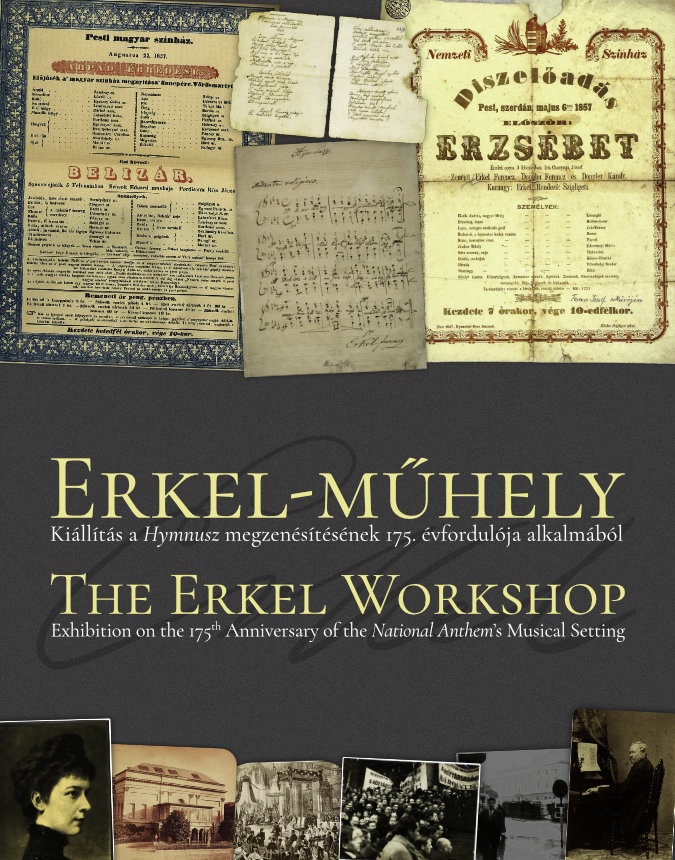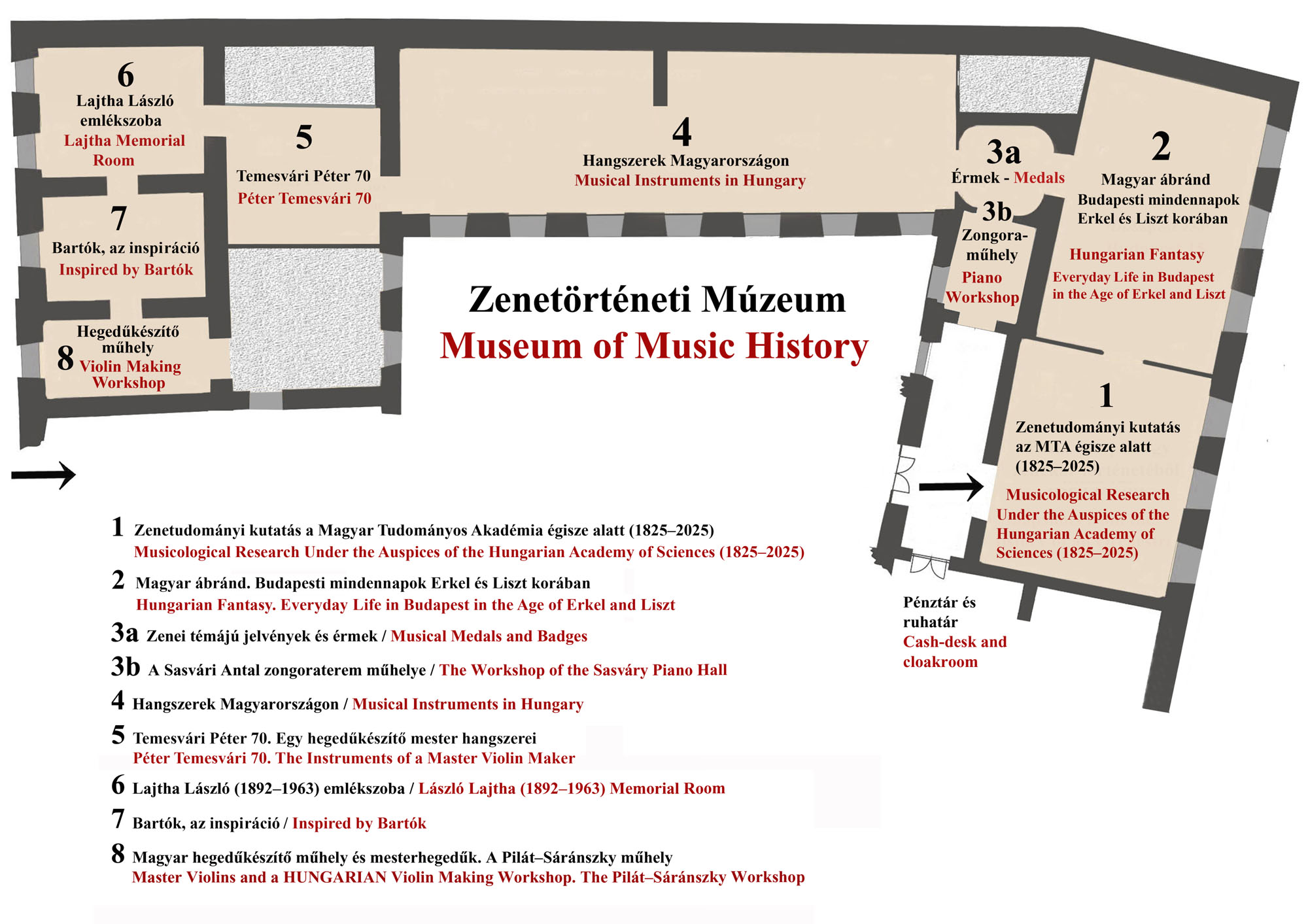Closed Exhibitions in the Museum of Music History
Erkel workshop
Exhibition on the 175th Anniversary of the National Anthem’s Musical Setting
Exhibition in the 2th room of the Museum of Music History
Curator: Katalin KIM
TEMPORARY EXHIBITION
The exhibition is open: From 12 June 2019 to March 2020 EXTENDED to 26 October 2020
Compositional workshops, involving the collaboration of multiple authors, were traditionally inherent part of the 19th-century music-theatre practice. The ensemble of the Hungarian Theatre of Pest (opened in 1837 and becoming the National Theatre in 1840), the direction of which was taken over by Ferenc Erkel as conductor in 1838, inherited this tradition from the era of itinerant companies. Our exhibition gives an insight, too, into the compositional workshop operated by Erkel, the creator of Hungarian national opera. With the exception of Hunyadi László (1844), a certain amount of joint work can be discovered in the autograph scores of each of Erkel’s operas. Our exhibition, however, focuses on the National Theatre’s 1844 competition for the musical setting of Ferenc Kölcsey’s poem Hymnus, which was won by Ferenc Erkel. The rich source material of the Hymnusz’ musical variants speaks for itself. It was not seen as a relic, but as a powerful symbol that was re-used and re-shaped – Erkel himself did the same in his operas (Erzsébet, Dózsa György). The name Erkel Workshop which appears in the title of the exhibition also refers to group of musicians of the National Theater, which was led by the conductor-composer for more than three decades. Departing from the context of the National Theatre, the exhibition presents the canonization of Erkel’s award-winning musical setting and its codification as Hungary’s National Anthem. Based on the Hymnusz’ recently explored sources from the National Theatre and the Opera House, we present the layer closest to Erkel Ferenc of its performance practice. At the same time, the broader context appears as well: on the one hand, we can see the most important sources of the tradition outside the National Theatre and the documents of major performances from one and a half hundred years up to the codification in 1989. On the other hand, a number of different pieces are presented that served as anthems simultaneously with the Hymnusz’ canonization and which also originate from the institutions of the Hungarian musical theatre (Rákóczi March, Hunnia nyög letiporva…, Szózat [Summons], Meghalt a cselszövő).
Curator: KIM Katalin
Staff: BÉKÉSSY Lili, ELEK Martin, GUSZTIN Rudolf, HORVÁTH Pál, MURVAI-BŐKE Gabriella, NÉMETH István csaba, RISKÓ Kata, TÓTH Emese, VIZINGER Zsolt
Visual design: KIM Attila
Editor: KUKÁR Manó
Graohic desing: VIZINGER Zsolt
From the Museum of Music History: BARANYI Anna, BORZ Zsófia, GERŐ Péter, HAJSZ Viktor
Execution: Print Wizard kft.
Sponsors:
MTA BTK Zenetuodmányi Intézet, Nemzeti Kulturális Alap, OTKA, Országos Széchenyi Könyvtár, Magyar Nemzeti Múzeum, Pest Megyei Levéltár, Magyar Állami Operaház
Pictures of the opening ceremony:
Photo: SZIGETI Tamás / HAS
Pictures of the exhibition:













